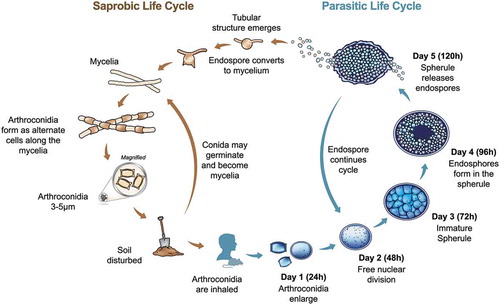Figures & data
Figure 1. Life cycle of Coccidioides spp. During the saprobic phase (left) the organism grows as mycelia, which mature into arthroconidia. These asexual conidia can be inhaled by a susceptible host. If this occurs, the fungus undergoes a morphological shift to form a spherule (right). The spherule structure matures to contain endospores, which can potentially disseminate to other body sites in the host including skin, bones, or central nervous system.

